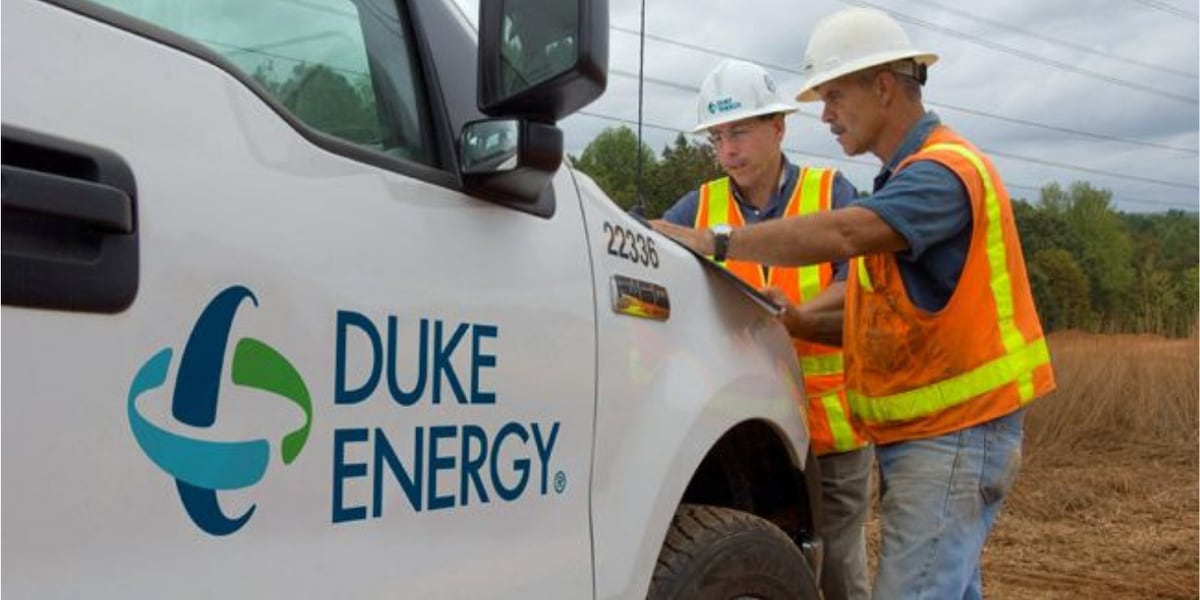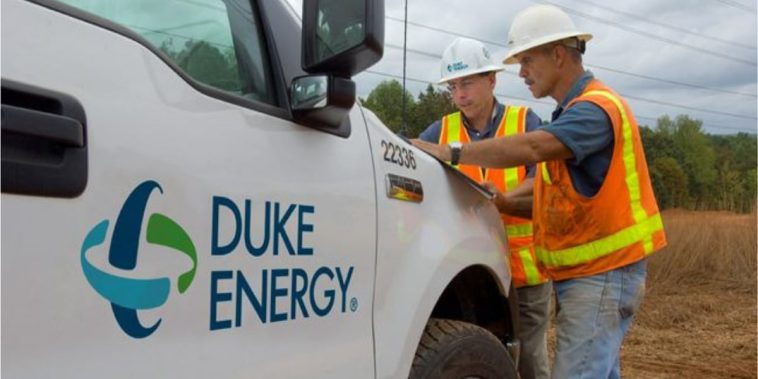

Duke Energy’s Initiative: A New Dawn for Taylor County?
Taylor County, Florida, has experienced its fair share of storm-ridden weather, forcing its residents and businesses to find creative ways to rebuild and restore normalcy. One recent development that has caught the attention of community members, local leaders, and economic experts alike is Duke Energy’s participation in the Site Readiness Program. As one of only six counties in the state hand-picked for this initiative, Taylor County stands to benefit from a plan designed to get industrial properties ready for new business investments, restore lost jobs, and revive an area still reeling from the impact of recent natural disasters and economic setbacks.
This ambitious initiative, spearheaded by one of the nation’s largest utility providers, is a prime example of how public-private partnerships can be the answer to creating new economic opportunities in regions struggling with the aftermath of extreme weather events and mill closures. In this opinion editorial, we take a closer look at this initiative, discuss its potential for transformative change, and consider the tricky parts, tangled issues, and subtle details that come along with such an enterprise. By examining the program from various angles, we aim to provide an informed perspective on its strengths and potential challenges from a small business and economic development viewpoint.
Understanding the Site Readiness Program and Its Promise
The Duke Energy Site Readiness Program is intended to set the stage for economic growth by preparing high-potential sites for industrial and commercial investments. Rather than simply waiting for private developers to locate their next project, the program works with state, regional, and local governments to make sure that key properties meet the requirements that companies need when considering expansion or relocation. This proactive approach is especially critical in counties like Taylor, where the local economy has been full of problems over the past couple of years with the destruction from multiple storms and the closure of major mills.
The program envisions transforming areas that have been left with lingering debris and slowed development, into new hubs that can attract major investments. The anticipated benefits include:
- A boost in local employment opportunities as businesses set up operations.
- Increased income for community members through higher wages and enhanced economic activity.
- Positive ripple effects that extend to other sectors, including small businesses, manufacturing, and retail.
By addressing the confusing bits of property readiness head-on, the initiative aims to peel back the layers of bureaucracy and tangled issues of outdated infrastructure, thereby making it less intimidating for companies to invest. Instead of facing nerve-racking regulatory hurdles, potential investors will see a streamlined pathway that helps them get their projects off the ground.
Post-Storm Recovery and Economic Revival
In recent years, Taylor County has faced more than its fair share of natural disasters. Multiple storms have battered the region, leaving behind trails of destruction and debris. The economic fallout from these storms has not only affected residential areas but has also had a serious impact on local businesses and the county’s industrial landscape.
Some of the key issues include:
- The long-term presence of debris and damaged infrastructure that slows down recovery efforts.
- The closure of significant mills that once provided hundreds of jobs, leaving families without steady incomes.
- The reshaping of the local economy, which now needs to adapt quickly to new business models and market conditions.
For the residents and local decision-makers, the challenge has been to steer through these overwhelming obstacles while keeping the economy on track. The Duke Energy initiative provides a glimpse of hope by promising a faster and more coordinated way to restore the county’s lost potential. While the scars of recent storms remain, this program is designed to help the county figure a path toward recovery by encouraging private sector investment into key industrial sites.
Diving Into the Opportunities for Small Businesses
Small businesses form the backbone of many communities, and in regions like Taylor County, they are often the first to suffer when economic disruptions occur. Economic recovery initiatives such as the Site Readiness Program are not only poised to bring in large investments but also create a more fruitful environment for local entrepreneurs. By attracting larger franchises and well-established companies, small businesses can benefit indirectly through increased demand for local services, improved infrastructure, and better overall economic health.
Several elements can lead to greater opportunities for small business owners:
- Enhanced Infrastructure: With a focus on upgrading industrial sites, improvements in transportation, utilities, and connectivity can give a boost to local commerce.
- Job Creation: New businesses often require supportive services, which can create market opportunities for small business ventures such as logistics, food services, and maintenance.
- Community Engagement: Economic growth stimulates community programs, which in turn create a more vibrant local market and encourage consumer spending.
It is clear that the greater challenge for local leaders is to ensure that these developments are inclusive, offering minute benefits at the grassroots level. This means ensuring that incentive packages, tax breaks, and regulatory adjustments are tuned to the needs of small businesses. Overcoming these nerve-racking regulatory hurdles may require a fresh look at policies that sometimes become tangled issues on their own.
Tackle the Tricky Parts of Economic Collaboration
As promising as any new initiative might seem, bonding the public and private sectors together is not without its tricky parts. It is off-putting to think that while such programs offer tremendous potential benefits, they are also loaded with subtle parts and challenging administration issues that require close attention to detail. The success of the Duke Energy initiative depends on transparency, effective communication, and a coherent strategy that could ultimately ensure that all parties get around potential pitfalls.
The program invites collaboration through:
| Stakeholder | Role in the Initiative |
|---|---|
| Duke Energy | Providing utility expertise, resources for site preparation, coordination with government agencies |
| Local Government | Streamlining permitting processes, offering tax or regulatory benefits, ensuring infrastructure improvements |
| Regional Economic Development Organizations | Marketing the prepared sites, coordinating with industries, supporting community recovery efforts |
| Private Investors | Identifying potential projects, investing capital, and generating employment through new ventures |
By making the roles and responsibilities clear, the program can sort out the potential for misunderstandings before they become overwhelming. In order to fully get into the details, community leaders must commit to detailed oversight and maintain open channels of communication among all participants.
Exploring Real-World Success Stories
The story of a new Amazon location in Highlands County is a prime example of how targeted economic development efforts can create measurable benefits. With about 60 new jobs and an injection of $25 million in capital, the project has had a positive impact that resonated well beyond its initial parameters. Such projects serve as proof points that when local governments work hand in hand with utilities like Duke Energy, the resulting investments can create a ripple effect of positive change throughout the community.
It also illustrates the potential for a domino effect—if one strategic initiative brings about job creation and infrastructure improvements, it can lead to further rounds of private investment. By taking a closer look at these successes, decision-makers in Taylor County and similar regions can glean important lessons on how to replicate these achievements on a larger scale.
Potential Roadblocks and How They Might Be Overcome
No large-scale economic initiative is without its challenges. In this case, a variety of factors may play a role in determining how successful the Duke Energy initiative ultimately proves to be in Taylor County. Some of the key issues include:
- Regulatory Hurdles: Bureaucratic delays can be nerve-racking for investors who are trying to get their projects off the ground quickly. These can be addressed through inter-agency partnerships that focus on finding your way around traditional bottlenecks.
- Funding and Capital: Securing the necessary funds to invest in property upgrades and prepare sites for new business developments is a considerable challenge. Collaborations with state and federal banks, along with public-private partnerships, may offer a pathway to overcoming these obstacles.
- Environmental Concerns: As Taylor County recovers from multiple storms, issues like cleanup, environmental safety, and sustainable development are of super important consideration. Any new development must strike a balance between growth and preserving the integrity of the local ecosystem.
- Community Pushback: Sometimes residents might worry that rapid change could lead to gentrification or displacement. While improvements in infrastructure and employment are welcomed, ensuring that growth is managed in a way that benefits everyone is key.
These issues, though intimidating at first glance, are not insurmountable. They simply require a thoughtful, well-coordinated approach that takes into account the fine points of local regulations, economic needs, and community well-being. Dedication to addressing each of these tangled issues head-on will be critical to the project’s long-term success.
Economic Impact on Local Communities
When large companies invest in new industrial sites, the benefits often extend beyond mere job creation. In addition to direct economic stimulation, there are subtle parts of the overall development that merit consideration. For instance, improved infrastructure such as roads, utility services, and communications networks provide long-lasting benefits even after initial projects conclude. These improvements benefit existing small businesses and help attract new ones, creating a synergistic effect that strengthens the county’s economy as a whole.
Enhanced economic activity can lead to a better quality of life in several tangible ways:
- Increased Consumer Spending: As more people gain employment, there is a boost in local spending at restaurants, retail stores, and service providers.
- Infrastructure Upgrades: Improvements in roads, bridges, and utilities benefit not only industrial areas but also residential neighborhoods.
- Community Programs and Development: Increased tax revenues can be reinvested in public amenities, schools, and community centers, linking economic progress directly to improved quality of life.
By sorting out these subtle details and ensuring a comprehensive plan, local governments and economic developers can create a compounding effect—helping to restore the county’s energy after it suffered from storm damage and industrial decline. In the long term, these efforts could transform Taylor County into a model for how post-disaster recovery can be both sustainable and inclusive, benefiting varied sectors from small businesses to large corporations.
Duke Energy’s Role and the Broader Utility-Driven Growth Model
Duke Energy’s involvement in this project illustrates the broader trend of utilities stepping beyond their traditional roles. Instead of focusing solely on power generation and distribution, Duke Energy is taking a leap toward actively shaping economic landscapes. This strategic maneuver is not just about preparing properties; it is also about building trust within communities and showing that large corporations can contribute meaningfully to local development.
In practical terms, Duke Energy’s leadership could lead to a shift in how economic investments are made in rural and semi-rural areas. By identifying and preparing potential industrial sites, they are providing a ready-made platform for investors looking to expand or relocate. This proactive approach has a few key implications:
- Risk Mitigation for Investors: When sites are prepped and ready, companies are more likely to take that initial plunge into investment without facing off-putting delays.
- Optimized Use of Land and Resources: Instead of underutilized or damaged property lying dormant, these sites can be transformed into thriving centers of commerce and industry.
- Sustainable Economic Growth: This model underscores a commitment to long-term development over quick fixes, ensuring that future growth is built on robust foundations.
By diving in to examine the little details of this program, it becomes clear that Duke Energy’s role is more than that of a utility provider. They are emerging as a key player in economic development—working with local, state, and regional bodies to make sure that the economic engine in areas like Taylor County can start turning again with renewed vigor.
Collaboration Between Government, Utilities, and Private Investors
The success of the site readiness initiative hinges on genuine collaboration between different sectors. Government agencies, utility providers like Duke Energy, and private investors are all essential players in this complex game of economic revival. Each party brings a unique set of strengths and capabilities to the table, but aligning their efforts can be quite challenging. There are plenty of confusing bits when it comes to governing policies, financial arrangements, and market dynamics.
To better understand the roadmap ahead, consider the following aspects that each stakeholder group must focus on:
- Government Agencies:
- Streamline permitting processes to accelerate site preparation.
- Offer tailored incentives that make investment more appealing for both large and small companies.
- Ensure that redevelopment efforts align with the community’s long-term needs.
- Utility Providers:
- Leverage existing infrastructure to support new projects.
- Collaborate closely with government agencies to provide data on energy needs and capacity.
- Act as facilitators of economic development through strategic planning and resource allocation.
- Private Investors:
- Identify viable projects that can stimulate local economies.
- Invest in comprehensive plans that factor in not only profits, but also community impacts.
- Work with local partners to ensure that initiatives meet market needs while addressing environmental concerns.
Working through the fine points and subtle distinctions between these roles is not without its off-putting challenges. However, the potential reward—revitalizing an entire region—is a key benefit that might denote the success of future economic recovery efforts. If the current initiative in Taylor County can set a positive precedent, it might be replicable in other regions that have faced similar setbacks from natural disasters and industrial shifts.
The Broader Economic Implications for Florida and Beyond
While Taylor County is the focus of this particular discussion, the implications of Duke Energy’s Site Readiness Program reach far beyond its borders. Florida as a whole has experienced a dynamic shift in its economic and industrial landscape over the past several years. With a combination of natural calamities, evolving market trends, and changing consumer preferences, localized efforts to attract new business investments have become even more essential.
Some important aspects include:
- Rethinking Regional Growth: Programs such as this have ignited discussions on how best to utilize land that has been affected by unpredictable weather events. By cleaning up and preparing industrial sites now, Florida positions itself as a more attractive destination for companies looking to expand.
- Boosting Public Confidence: When communities see tangible steps being taken to restore the economic environment, it instills a sense of hope and resilience. This psychological boost can be just as important as the direct financial impact of new investments.
- Creating a Sustainable Blueprint: Future economic models might increasingly rely on forward-thinking programs that merge infrastructure improvement with community outreach, ultimately resulting in a more balanced approach to growth.
In essence, the Taylor County project represents more than just a local developmental effort; it is a microcosm of the broader shifts occurring throughout the state and the country. It highlights the importance of working through tangled issues and hidden complexities in order to build an economy that not only recovers but thrives in a post-disaster landscape.
Sorting Out the Small Business Angle in a Big Investment Landscape
Small businesses often worry that an influx of large corporations might overshadow local entrepreneurship. Yet, when approached correctly, large-scale investments tend to create an environment in which small businesses can flourish too. The anticipation of new infrastructure and enhanced local spending can help small business owners adapt and grow.
For those looking to take a closer look at how this might play out in Taylor County, here are some potential pathways to success:
- Networking Opportunities: Increased industrial activity often creates a network of suppliers, service providers, and ancillary businesses that can work closely with larger corporations.
- Complementary Industries: As major businesses move into upgraded industrial parks and areas, opportunities open up for complementary industries. This means that local artisans, tech startups, and small-scale manufacturing units could benefit indirectly from the improved economic climate.
- Expansion of Market Channels: New investments bring improved transportation and logistics, which, in turn, can open up market channels that small business owners have long struggled to access.
The challenge for small business advocates is to ensure they proactively work with local officials and economic planners. By having a seat at the table, local entrepreneurs can steer through the initiatives to make sure their needs are not neglected. It’s all about finding your way in a rapidly shifting landscape while ensuring that the slight differences and fine shades of local economic culture are respected.
Community Response and the Importance of Inclusive Development
When discussing large-scale investments and redevelopment plans, it is important to consider the community’s perspective. Residents and local business owners alike are watching these initiatives with a mix of hope and caution. Inclusiveness in development means that all parts of the community benefit from the economic uplift, not just certain sectors or neighborhoods.
Key points for ensuring that development is inclusive include:
- Transparent Communication: Local governments and utility companies need to share plans, timelines, and potential impacts openly with the community so that residents can get into the planning process early on.
- Equitable Resource Distribution: Funds and resources should be allocated in a way that benefits popular community projects and addresses the needs of those who have been adversely affected by past disruptions.
- Community Feedback Mechanisms: Establishing channels for residents to voice their concerns and ideas can ensure that the redevelopment plans are as comprehensive and inclusive as possible.
When development initiatives embrace community feedback, it’s easier to smooth over any nerve-racking concerns that might arise. Inclusive planning not only helps in steering through the minute details but also ensures that the economic growth is shared widely, laying a foundation for a more united and resilient community.
The Role of Tax Incentives and Business-Friendly Policies
An often-overlooked aspect of such comprehensive initiatives is the role of supportive tax policies and incentives tailored for economic growth. In any situation where the government is trying to lure new investments, well-designed tax incentives can make the difference between an idea that remains just a plan and one that takes a transformative leap in revitalizing the local economy.
Local authorities in Taylor County could consider several measures to ease the path forward:
- Temporary Tax Breaks: Offering reduced tax rates or temporary exemptions to businesses that commit to investments in these newly prepared industrial sites.
- Grants and Subsidies: Providing financial support for small businesses and startups to help them scale up alongside incoming large-scale investments.
- Streamlined Permitting Processes: Simplifying regulatory requirements to help both small and large companies accelerate their plans for local expansion.
These strategies are all means to address the overwhelming regulatory bits and to make sure that both large and small investors find the environment comfortable enough to take advantage of available opportunities. In the end, clear and supportive policies will be one of the key driving forces behind the initiative’s long-term success.
Looking Ahead: A Roadmap for Economic Acceleration
In summary, Duke Energy’s Site Readiness Program in Taylor County represents a bold attempt to rebuild an economy battered by natural disasters and industrial decline. By preemptively preparing properties for investment, the initiative seeks to turn an area that has been left with sleeping potential into a hub of vibrant economic activity. The program’s success will hinge on how well the leading stakeholders are able to work through tangled issues, manage complicated pieces of red tape, and, ultimately, create a supportive environment where both large investments and small businesses can thrive.
As Florida faces the tricky parts of evolving market demands alongside the lingering effects of severe weather, initiatives like this one offer encouraging prospects for a turnaround. While there might be moments that feel overwhelming or nerve-racking—especially when it comes to bridging the fine points between public expectations and private objectives—the potential for a comprehensive economic revival is undeniable.
Moving forward, it will be critical for local governments to maintain a delicate balance between promoting industrial growth and ensuring that the unique needs of the community are met. The aim should be to create a roadmap that other regions can replicate—a blueprint that proves economic recovery is possible through coordinated efforts, innovative utility-driven programs, and open dialogue with local residents.
Concluding Thoughts: A Community Poised for Renewal
The promise held by Duke Energy’s involvement in Taylor County extends beyond immediate economic benefits. It symbolizes the possibility of transforming a community burdened with debris, lingering effects of storms, and industrial setbacks into a thriving ecosystem. Such initiatives remind us that even in times when progress seems loaded with issues and on edge, cooperative efforts can clear the way for sustainable development.
For residents, local entrepreneurs, and government officials alike, this program offers a fresh opportunity to take the wheel and set a course toward a brighter future. By addressing not only the obvious challenges—like outdated infrastructure and regulatory delays—but also the little twists and subtle details that make each community unique, there is a genuine chance for Taylor County to reinvent itself.
In our increasingly interconnected economic landscape, programs that facilitate collaboration between utilities, government agencies, and private investors are not just important—they are essential. With a shared commitment to transparency, community involvement, and strategic planning, initiatives like the Site Readiness Program can pave the way for enduring growth. The transformations brought about by such efforts will likely serve as a beacon for other regions seeking to revitalize their local economies in the face of both natural and man-made challenges.
Ultimately, the success of this initiative will be measured not only in dollars of investment and numbers of jobs created, but also in the renewed spirit of the community—a spirit that embraces change while honoring its history, uses progress to overcome tangled issues, and turns even the most intimidating challenges into opportunities for shared prosperity.
As we watch Taylor County navigate through the twists and turns of this ambitious economic journey, one thing remains clear: the future is not written solely by past losses and setbacks, but by the collective determination to rebuild stronger and smarter. With the combined efforts of Duke Energy, local officials, and community leaders, there is every reason to be optimistic about the transformative power of collaborative economic development.
The road ahead may be long and full of problematic spots, yet every step taken today can lead to a more resilient, vibrant, and inclusive tomorrow. Now is the time for everyone—big corporations, small business owners, and community residents—to join forces and take advantage of the super important opportunities that lie ahead.
While challenges will undoubtedly persist, the proactive approach of preparing key sites, streamlining processes, and enhancing the infrastructure are all promising signs. As other counties and regions look on, Taylor County’s journey under the Duke Energy initiative could well become a case study in effective economic revitalization—demonstrating that with the right mix of collaboration, transparency, and thoughtful planning, even the most intimidating obstacles can be overcome.
In closing, it is essential to recognize that economic recovery is not simply about rebuilding what was lost—it is about creating a foundation for long-term, sustainable growth that benefits every layer of society. By embracing innovative partnerships and addressing both the obvious and hidden challenges, Taylor County is setting an example of how a community can emerge stronger after adversity. This journey, much like any significant transformation, is replete with fine details, nerve-racking moments, and occasional setbacks; yet, it is also filled with hope, potential, and the promise of a brighter future for all.
Originally Post From https://www.wctv.tv/2025/08/20/duke-energy-selects-taylor-county-program-aimed-growing-economy-attracting-new-businesses/
Read more about this topic at
Business Growth Initiative
9 Growth Initiatives for Successful Companies [With …


